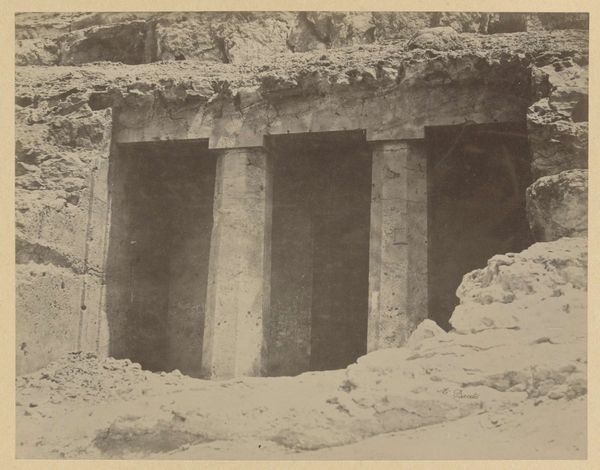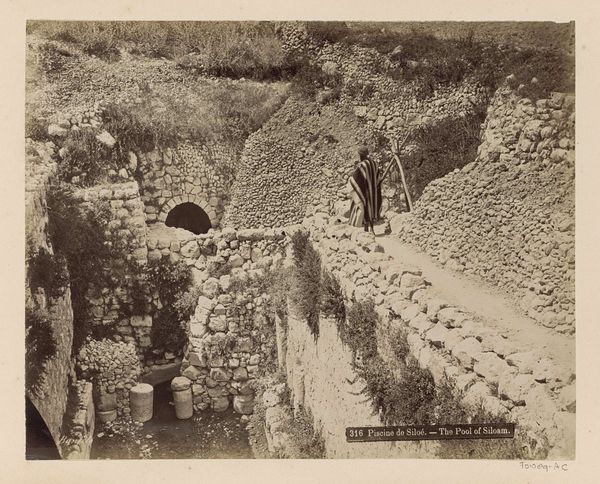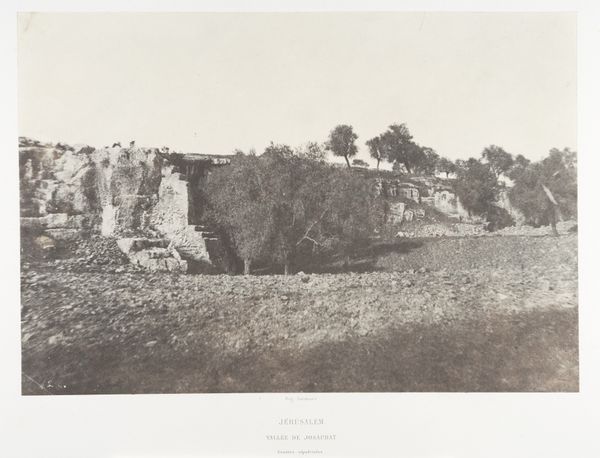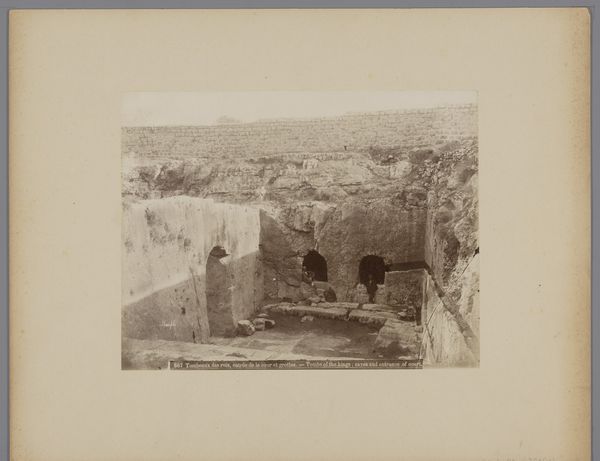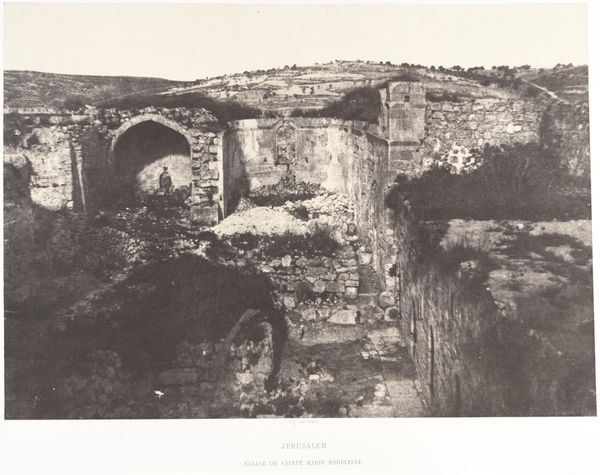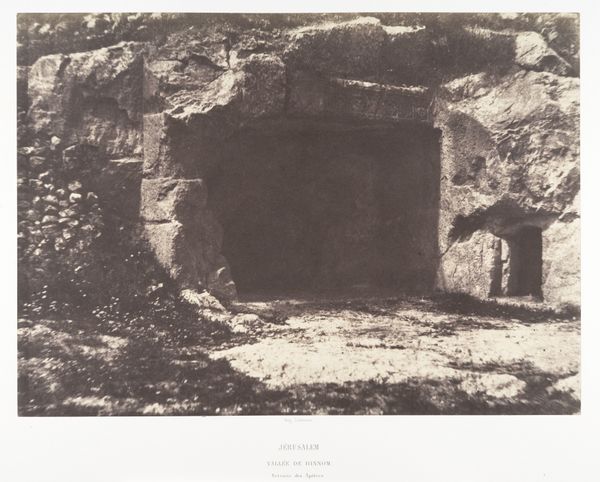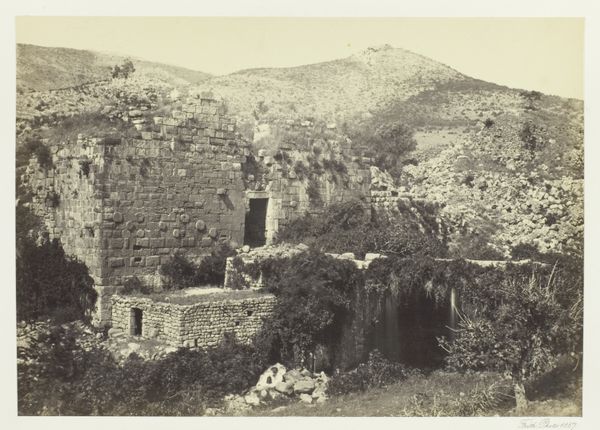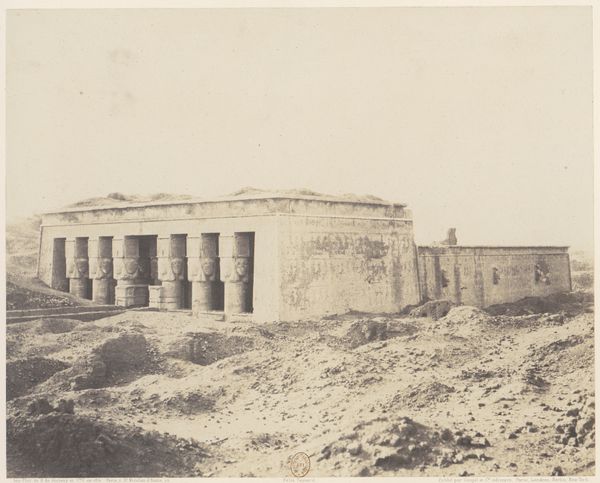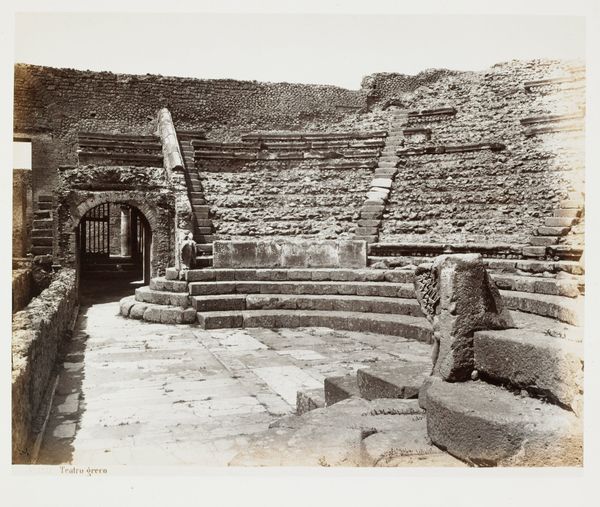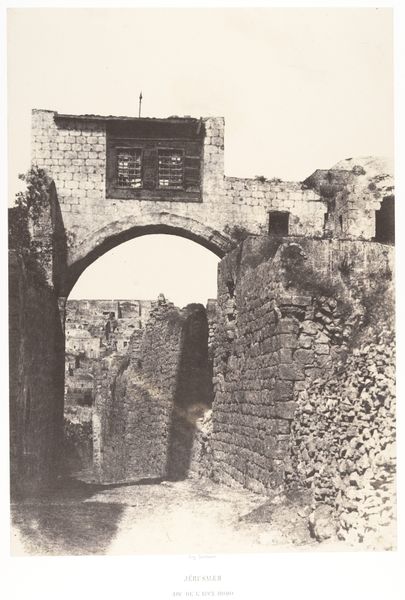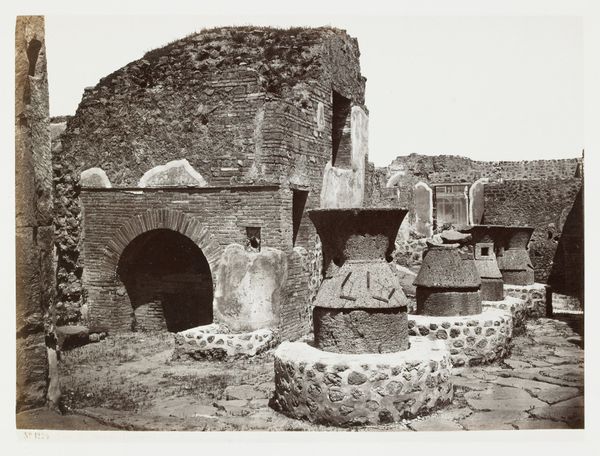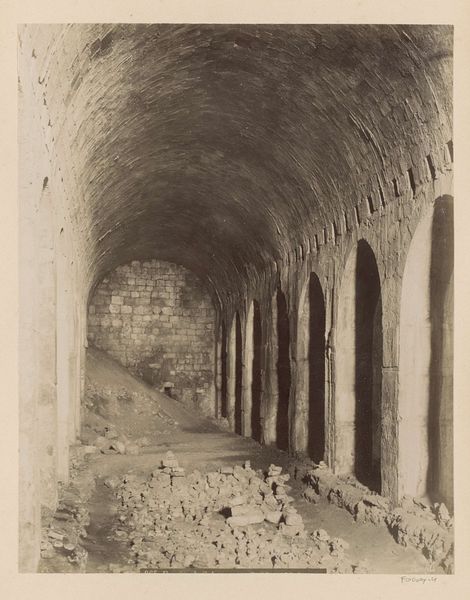
Binnenplaats van de Graven van de Koningen in Jeruzalem c. 1867 - 1895
0:00
0:00
photography, albumen-print
#
landscape
#
photography
#
ancient-mediterranean
#
orientalism
#
islamic-art
#
albumen-print
Dimensions: height 223 mm, width 282 mm
Copyright: Rijks Museum: Open Domain
Curator: This albumen print captures the interior courtyard of the Tomb of the Kings in Jerusalem. The photographic studio Maison Bonfils made it sometime between 1867 and 1895. Editor: It feels remarkably austere, doesn't it? That cool, sepia-toned light emphasizes the textures of the carved stone, creating a stark sense of place. Curator: Absolutely. The albumen printing process itself involved coating paper with egg whites and silver nitrate, contributing to that unique luminosity and sharpness we see. The choice of this specific process, also, situated the work within a context of certain market expectations and artistic circles that greatly prized photographs of faraway places and the so-called Holy Land. Editor: Looking at the architecture, those carved facades and that open tomb…they evoke ideas about power, certainly. The Kings referred to in the name are loaded with cultural memory. This space bridges mortality and legacy. Curator: Yes, it is a testament to architectural labor and material. Notice the tool markings; they represent a social element, offering insight into craft processes of that time. It allows for examination of economic systems during photograph's manufacture and distribution, not unlike similar operations of extraction throughout this contested territory, as well. Editor: I am also seeing how Maison Bonfils carefully arranged the composition, using light and shadow to emphasize the tomb's imposing presence. These visual choices affect the symbolic weight of the place itself and highlight our human attempts to mark history and time. The image is staged so to encourage awe and reverence for an ancient and monumental site. Curator: And that's precisely where I see the material production of such an image—its purpose was inherently commercial and exploitative, yet also one driven by labor under challenging conditions for the photographer, camera operators, and the individuals who mixed chemical ingredients, who risked considerable danger under harsh circumstances. Editor: A crucial distinction! Ultimately, what we are considering, through differing but related lens, is our shared relationship with material remains. How humans, through processes of vision and creation, confront fundamental concerns about survival, death, legacy, and cultural value. Curator: I agree. Recognizing the multiple viewpoints within an image grants new avenues to appreciate our relationship with history.
Comments
No comments
Be the first to comment and join the conversation on the ultimate creative platform.
